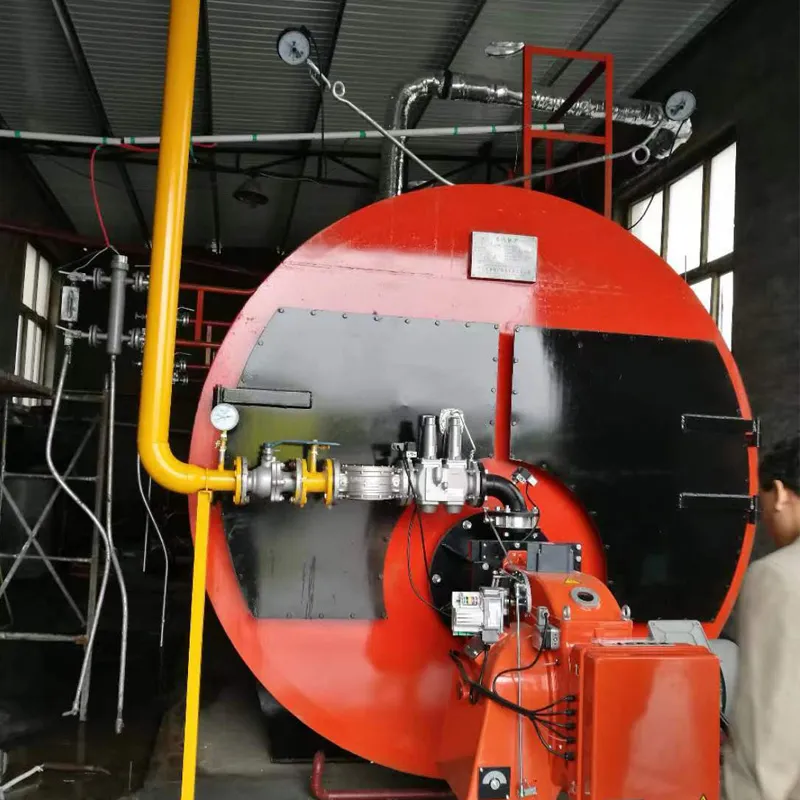
Nov . 14, 2024 14:41 Back to list
hot water boiler schematic diagram
Understanding Hot Water Boiler Schematic Diagrams
Hot water boilers play a crucial role in heating systems, providing essential warmth in residential and commercial buildings. A schematic diagram of a hot water boiler offers a simplified representation of its components and their functions, serving as an essential tool for understanding how these systems work. This article delves into the intricacies of a hot water boiler schematic diagram, highlighting its key parts and their interactions.
Components of a Hot Water Boiler
At the core of a hot water boiler system are several key components which are critical for its operation. The primary elements typically depicted in a schematic diagram include the boiler unit itself, the burner, heat exchanger, pump, expansion tank, and piping system. Understanding these components can help in troubleshooting, maintenance, and system design.
1. Boiler Unit The boiler is where water is heated. It can be designed as a fire-tube or water-tube unit. In a fire-tube boiler, hot gases pass through tubes surrounded by water, while in a water-tube boiler, water flows through tubes heated by flue gases. The schematic illustrates the boiler's internal layout, showing how the heat exchange occurs.
2. Burner The burner is critical for the combustion process, igniting fuel to generate heat. This component is often depicted along with fuel supply lines in the schematic, which indicates how energy is introduced into the system. Understanding the burner’s role helps in recognizing fuel types and optimizing efficiency.
3. Heat Exchanger Located within the boiler, the heat exchanger transfers heat from the combustion gases to the water. The schematic delineates the paths of hot gases and water flow, illustrating the heat transfer process. A well-designed heat exchanger maximizes efficiency, minimizing energy wastage.
4. Pump The pump circulates hot water throughout the heating system. It maintains the flow between the boiler, radiators, and other heating components. In the schematic diagram, arrows typically indicate the direction of water flow, with the pump positioned to emphasize its role in circulation.
hot water boiler schematic diagram

5. Expansion Tank This component accommodates the expansion of water as it heats. The expansion tank prevents excessive pressure buildup, which could lead to system failure. A schematic often depicts this tank in relation to the boiler, indicating safety features for maintaining optimal pressure.
6. Piping System The schematic diagram outlines the network of pipes that transport hot water to distribution systems like radiators and underfloor heating. Different piping configurations are illustrated, showing how the system is designed for efficient heat distribution.
Functionality of the System
Understanding the function of these components as shown in the schematic diagram is essential for grasping how hot water boilers operate. When called upon to deliver heat, the burner ignites fuel, generating hot gases that flow through the heat exchanger. The water circulates, absorbing heat, and is then pumped throughout the building. Meanwhile, the expansion tank balances water pressure, ensuring safe operation.
Importance of Schematic Diagrams
Schematic diagrams are invaluable for technicians and engineers. They provide a clear visual representation of complex systems, highlighting how various elements interconnect. This clarity facilitates effective troubleshooting; when issues arise, a technician can refer to the schematic to identify potential failure points. Furthermore, these diagrams are critical during the design phase, allowing for the development of efficient and reliable heating systems.
Conclusion
A hot water boiler schematic diagram is not merely a technical illustration; it is a gateway to understanding the intricate world of heating systems. By breaking down the components and their functions, these diagrams empower users to engage with their systems, whether for maintenance, troubleshooting, or design. In a world where efficient heating is vital for comfort and energy savings, mastering the knowledge encapsulated in a hot water boiler schematic becomes an essential tool for anyone involved in the HVAC industry.
-
High-Efficiency Commercial Oil Fired Steam Boiler for Industry
NewsJul.30,2025
-
High-Efficiency Biomass Fired Thermal Oil Boiler Solutions
NewsJul.30,2025
-
High Efficiency Gas Fired Thermal Oil Boiler for Industrial Heating
NewsJul.29,2025
-
High-Efficiency Gas Fired Hot Water Boiler for Sale – Reliable & Affordable
NewsJul.29,2025
-
High Efficiency Biomass Fired Hot Water Boiler for Industrial and Commercial Use
NewsJul.29,2025
-
High-Efficiency Biomass Fired Hot Water Boiler for Industrial Use
NewsJul.28,2025
Related PRODUCTS






















